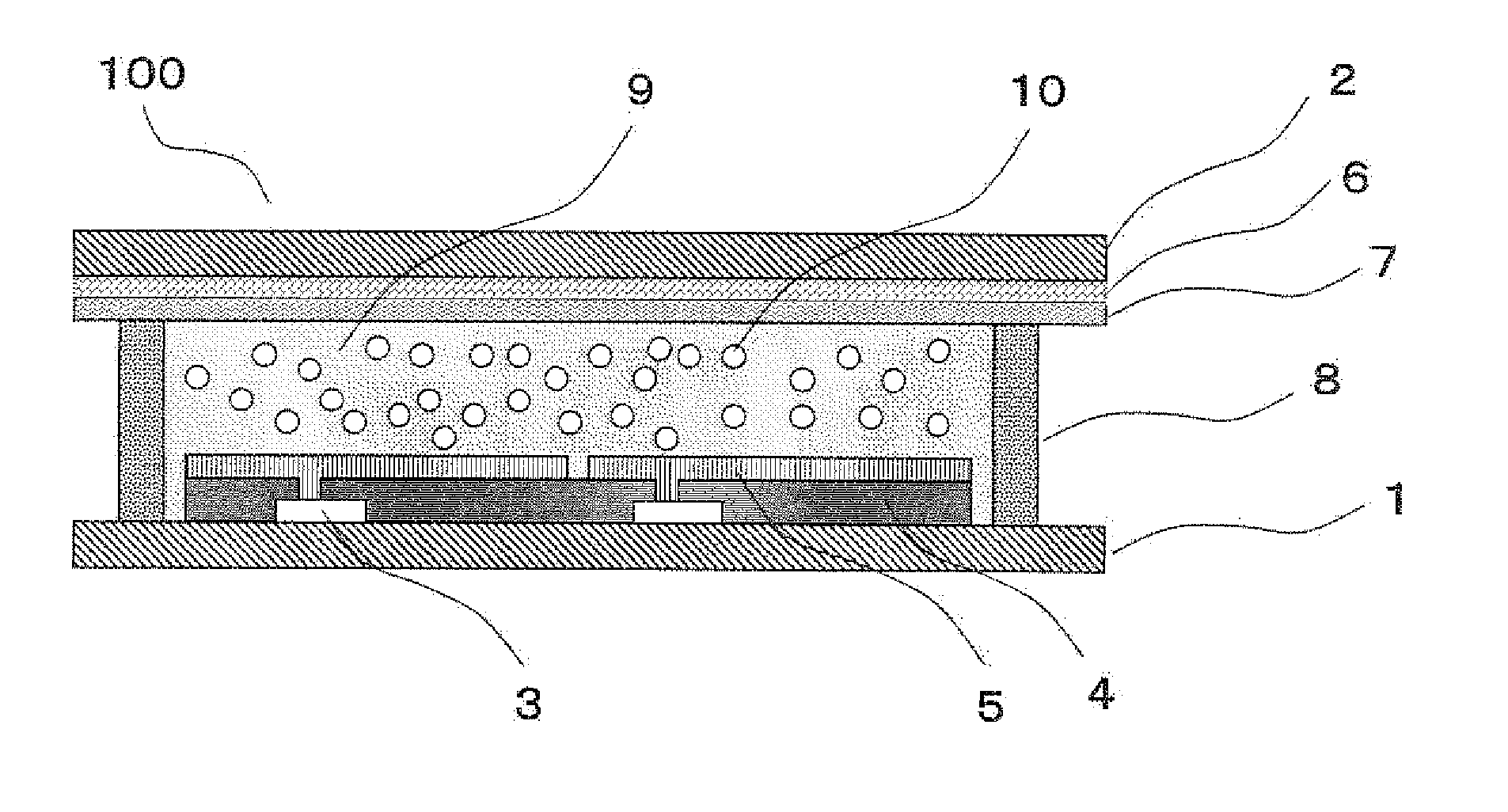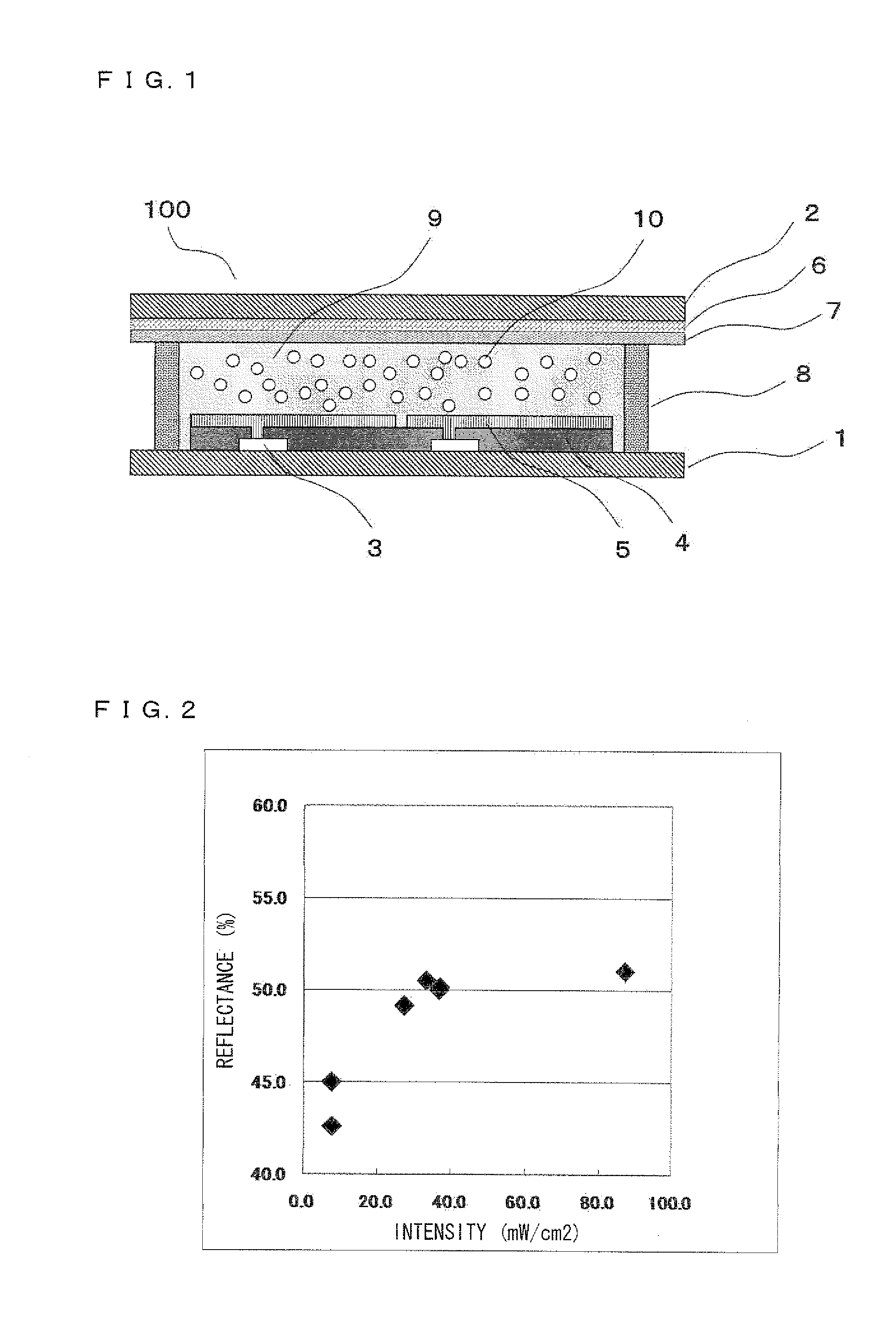Liquid crystal display device and method for producing the same
a liquid crystal display and liquid crystal technology, applied in the field of liquid crystal display devices, can solve the problems of ultraviolet radiation degradation of liquid crystal materials, easy damage to liquid crystal materials, etc., and achieve the effects of promoting polymerization, high display quality, and promoting polymerization
- Summary
- Abstract
- Description
- Claims
- Application Information
AI Technical Summary
Benefits of technology
Problems solved by technology
Method used
Image
Examples
examples
[0047]The following describes in detail the present invention on the basis of Examples.
[0048]A glass substrate having a thickness of 0.7 mm was used for a first insulating substrate. FIG. 5 illustrates a plain view of a pixel circuit used in the present example. VLAs (pixel voltage supply lines having a phase identical to that of a common electrode) 31 formed parallel to a longitudinal direction or a lateral direction of the pixel circuit surround a region. The region corresponds to a subpixel. The subpixel includes twelve TFT elements 3 constituting two static RAMs. The TFT elements 3 and wirings are provided over the subpixel of the present example. A Vdd 33 and a Vss 34 are wirings for supplying a voltage to the static RAMs. A GL 35 and a GLS 36 are wirings for a ground electric potential. An SL 37 is a wiring for supplying an image signal. A reflective electrode is electrically connected to the VLAs 31 or a VLB (pixel voltage supply line having a phase opposite to that of the co...
PUM
| Property | Measurement | Unit |
|---|---|---|
| thickness | aaaaa | aaaaa |
| wavelength | aaaaa | aaaaa |
| wavelength | aaaaa | aaaaa |
Abstract
Description
Claims
Application Information
 Login to View More
Login to View More - R&D
- Intellectual Property
- Life Sciences
- Materials
- Tech Scout
- Unparalleled Data Quality
- Higher Quality Content
- 60% Fewer Hallucinations
Browse by: Latest US Patents, China's latest patents, Technical Efficacy Thesaurus, Application Domain, Technology Topic, Popular Technical Reports.
© 2025 PatSnap. All rights reserved.Legal|Privacy policy|Modern Slavery Act Transparency Statement|Sitemap|About US| Contact US: help@patsnap.com



